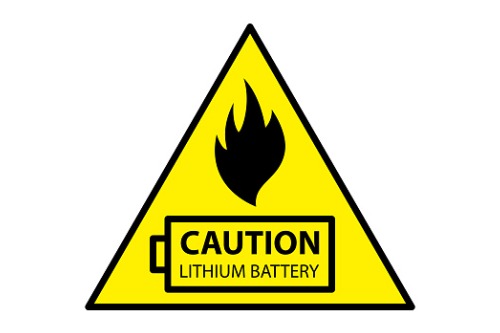Authored by QBE
UK fire services attended 46% more fires linked to lithium-ion batteries in 2023 than 2022, according to new research from business insurer QBE.
Batteries that power electric vehicles such bikes, scooters and cars were involved in almost three fires a day last year, compared to under two fires a day the previous year.
QBE is calling for improvements in lithium-ion battery safety because the fires they might start burn differently from regular fires, increasing the risk of injury to people and damage to property.

Data collected by QBE from FOI requests to all UK fire services [1] suggests almost a third (29%) of lithium-ion fires involved e-bikes. They accounted for 270 recorded fires in 2023, up from 158 in 2022 (+70%). Over the same period, fires involving e-scooters rose by 7% (117 to 125). Given the increasing popularity of electric transport, there needs to be more education on how to prevent and deal safely with fires caused by lithium-ion batteries.
The London Fire Brigade recorded the highest number of lithium-ion fires last year (378), followed by Lancashire Fire and Rescue Service (70) and Avon Fire and Rescue Service, which covers Bath and Bristol (57). Surprisingly, Greater Manchester reported fewer lithium-ion fires (24) than West Sussex (25).
The data obtained shows fires involving electric cars increased by 33% from 89 nationally in 2022 to 118 in 2023. This remains a low number compared to the one million electric cars on UK roads.
No other country in Europe registers as many electric buses as the UK [2]. The data collected shows fires involving e-buses increased by 22% last year while blazes involving e-trucks quadrupled. However, only seven fire services were able to report on these types of incidents.
Adrian Simmonds, practice leader for property risk solutions at QBE Insurance, says: “We see more fires linked to lithium-ion batteries, which is concerning. They burn differently from normal fires, so people attempting to put them out run more risks of injury.
“We welcome the adoption of electric vehicles. To help with a safer rollout, we are calling for more support for fire services to help improve education in dealing with the new risk profile. The UK government needs to impose more stringent safety requirements to reduce fire frequency. Increasing awareness of proper maintenance, storage and disposal of lithium-ion batteries is paramount to protecting people and property.”
Lithium-ion fires are the result of “thermal runaway”, where batteries start to irreversibly overheat, usually due to impact damage, over-charging or over-heating. Batteries on electric vehicles are extremely powerful, so the resulting explosive fire incidents are significantly more energetic, causing extensive damage, and potentially injury or even death.
QBE’s recommendations on where and how to park an e-bike safely at home:
- Only buy electric devices from a reputable retailer that provides appropriate certifications.
- Only use the battery charger that comes with the device.
- Plug the charger into a power supply that has circuit breaker protection.
- Charging should preferably be done in a well-ventilated area outdoors and away from direct sunlight or a heat source.
- Don’t charge your device in the hall or corridors of your tower block or office building: these common areas will almost always be part of the fire escape route.
- If you must charge indoors, choose a room without soft furnishings, like a kitchen or preferably a locked garage, shed or external cupboard that doesn’t contain the gas/electric meter or any combustibles such as BBQ gas cylinders, garden furniture or cardboard boxes.
- Make sure there is a working smoke detector or at least a heat detector.
- Don’t leave devices charging when you’re asleep or when there’s no-one is in attendance.
- Unplug devices once fully charged.
- If the battery suffers heavy impact or any physical damage, such as in an accident or fall, consider that it might be damaged, and the fire risk increased.
Here are recommendations for businesses which use electric cars, buses, fork lift trucks or similar:
- Only use the correct chargers for the vehicle.
- Chargers and vehicles on charge should be at least 2m clear of combustible materials, skips, waste bins, wooden fence lines, sheds, LPG gas vessels and cylinders.
- For chargers you own, you need a formal maintenance contract and a weekly inspection for signs of damage.
- For indoor chargers, charger power must be interlocked to the premises’ fire alarm.
- If there is no automatic fire detection in the parking/charging area, have it installed directly above the charging bays.
- Avoid installing or using chargers in basements, undercrofts or at ground level below raised buildings.
- If an electric vehicle has been involved in an accident, treat it as if the lithium-ion battery could be damaged and get it recovered by an EV recovery specialist. If it is transported to premises you own, keep it at least 30m away from all other vehicles and buildings, infrastructure, trees or combustibles.
- Ensure the Fire Brigade are familiar with your parking and charging arrangements.
Train employees on what to do and not to do when dealing with EV lithium-ion battery fires; engage with the Fire Brigade for best advice



